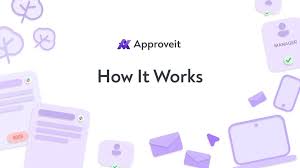Enhancing Financial Integrity with Accounts Payable Audit Software

Enhancing Financial Integrity with Accounts Payable Audit Software
In today’s rapidly evolving financial landscape, organizations are increasingly recognizing the necessity of robust financial management systems. Among these, accounts payable audit software https://approveit.today/accounts-payable-software stands out as a pivotal tool. This software not only streamlines the accounts payable (AP) processes but also ensures that organizations maintain compliance, enhance operational efficiency, and mitigate risks associated with financial discrepancies.
Understanding Accounts Payable Audit Software
Accounts payable audit software refers to a specialized tool designed to manage and audit the accounts payable processes within an organization. It automates the workflows related to vendor payments, invoice processing, and financial reporting. By integrating this software into their financial systems, companies can achieve greater transparency and control over their expenditure.
The Importance of Accounts Payable Audits
Regular accounts payable audits are vital for organizations to ensure that their financial processes are not only efficient but also compliant with regulatory requirements. These audits help to identify discrepancies, prevent fraud, and highlight areas for improvement within the AP workflow. Accounts payable audit software facilitates this by providing automated checks and balances, ensuring that all transactions are documented and verifiable.
Key Benefits of Implementing Accounts Payable Audit Software
- Increased Efficiency: Manual processing of invoices and payments is time-consuming and prone to errors. Automating these processes significantly speeds up workflows, allowing finance teams to focus on strategic tasks rather than tedious data entry.
- Enhanced Accuracy: With built-in validation checks, accounts payable audit software reduces the potential for human error. This leads to more accurate financial records, which are crucial for effective decision-making.
- Improved Visibility: The software provides real-time insights into the accounts payable process, allowing organizations to monitor spending patterns and cash flows easily. This visibility aids in budgeting and financial planning.
- Fraud Prevention: By conducting regular audits and having robust control measures in place, organizations can significantly reduce their vulnerability to fraud. The software can flag unusual activities and ensure proper authorizations are in place for payments.
- Compliance and Reporting: Staying compliant with financial regulations is a major concern for organizations. Accounts payable audit software ensures that all transactions are recorded in accordance with regulatory standards, simplifying the audit process.
Choosing the Right Accounts Payable Audit Software
When selecting accounts payable audit software, organizations should consider several factors to ensure they choose the right solution that meets their specific needs:

- User-Friendliness: The software should have an intuitive interface that makes it easy for users to navigate and utilize its features effectively.
- Integration Capabilities: It should integrate seamlessly with existing financial systems, enabling smooth data transfer and minimizing disruptions.
- Scalability: The solution should be scalable, accommodating the growth of the organization and the increasing complexity of its financial processes.
- Customer Support: Reliable customer support is crucial for troubleshooting and ensuring that the software is used to its full potential.
Implementation Best Practices
Successfully implementing accounts payable audit software involves a few best practices to ensure a smooth transition:
- Prepare Your Team: Communicate the benefits and changes that will come with the new software to all stakeholders involved in the accounts payable process.
- Data Migration: Ensure that existing data is accurately and securely transferred to the new system, avoiding potential loss or corruption of critical information.
- Training: Provide comprehensive training for users to familiarize them with the software and to maximize its utility in their daily operations.
- Monitor Performance: After implementation, monitor the software’s performance closely and solicit feedback to make necessary adjustments and improvements.
Common Challenges and Solutions
While implementing accounts payable audit software can yield numerous benefits, organizations may face challenges such as resistance to change or integration issues. Addressing these concerns upfront is vital:
- Change Management: Foster a culture of adaptability by highlighting the efficiency gains and ease of use that come with the software. Engage employees in discussions about their concerns and provide reassurances throughout the implementation process.
- Integration Issues: Work closely with IT teams and software vendors to address integration concerns. This may involve testing the software in parallel with current systems before full adoption.
The Future of Accounts Payable Audit Software
The future of accounts payable audit software is poised to evolve significantly with advancements in technology, particularly artificial intelligence (AI) and machine learning (ML). These technologies will further enhance automation, analyze trends, and predict potential discrepancies, leading to even greater efficiency and security in accounts payable processes. As businesses continue to recognize the importance of sound financial management, accounts payable audit software will play an increasingly critical role in ensuring accuracy, compliance, and strategic financial planning.
Conclusion
In conclusion, the implementation of accounts payable audit software is essential for organizations seeking to optimize their financial processes, enhance compliance, and mitigate risks. By automating routine tasks, improving financial visibility, and safeguarding against fraud, this software serves as a cornerstone in robust financial management. As technology continues to advance, embracing these tools will be crucial for organizations looking to adapt and thrive in today’s complex financial environment.
